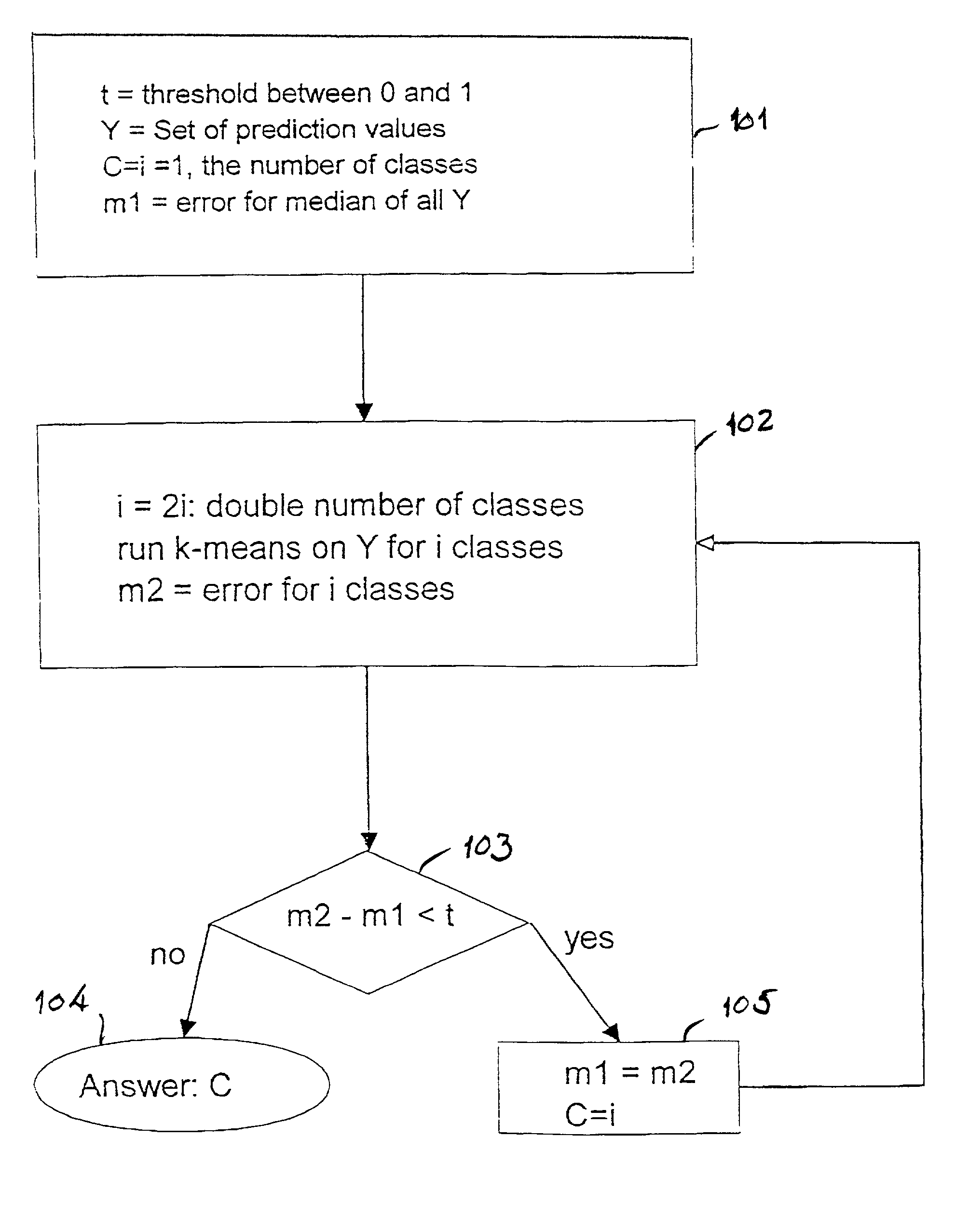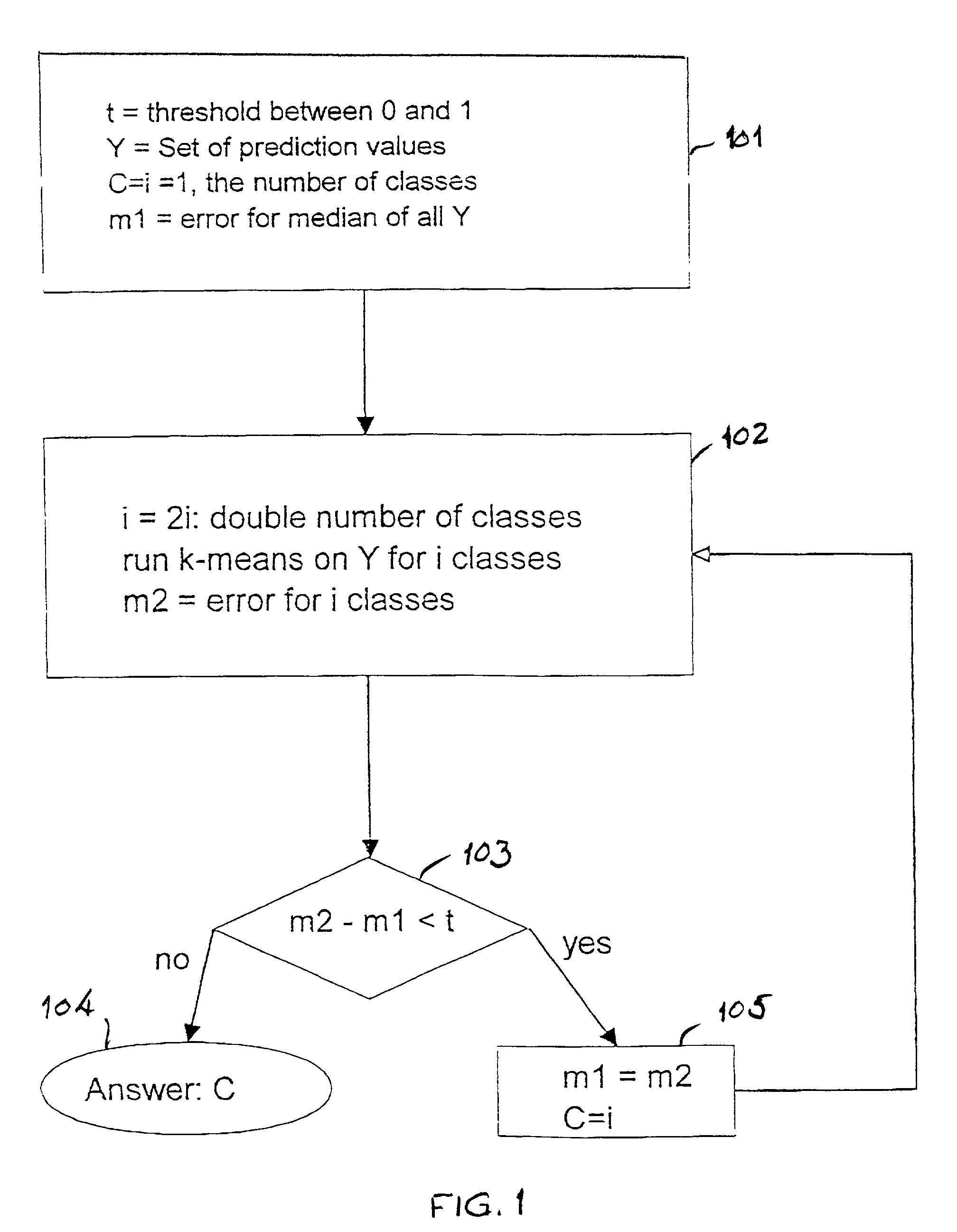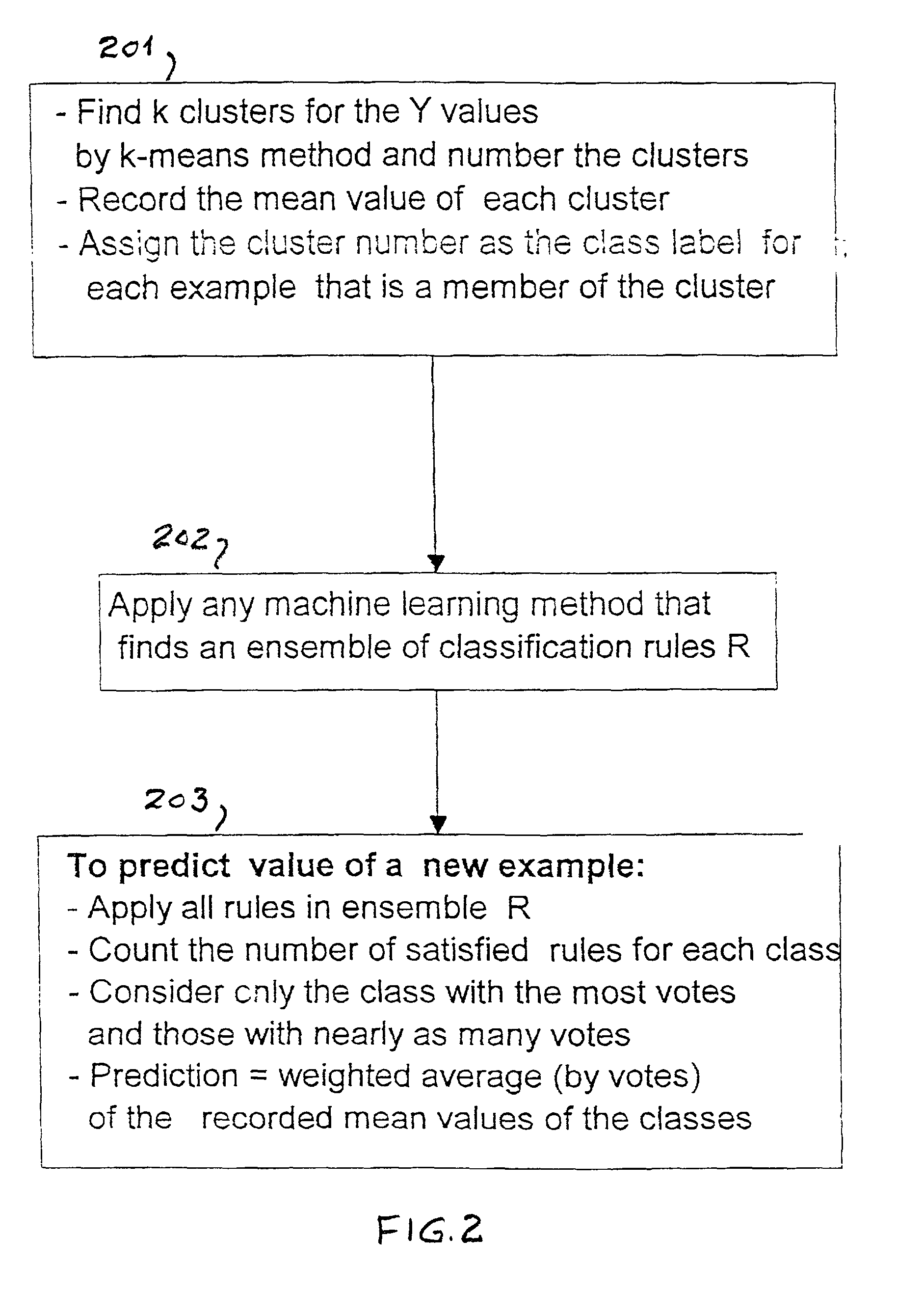Method for statistical regression using ensembles of classification solutions
a statistical regression and solution technology, applied in the field of statistical regression using ensembles of classification solutions, can solve the problems of inability to adapt to regression in such a direct manner, classification errors can diverge from distance measures used,
- Summary
- Abstract
- Description
- Claims
- Application Information
AI Technical Summary
Problems solved by technology
Method used
Image
Examples
Embodiment Construction
[0018] Although the predicted variable in regression may vary continuously, for a specific application, it is not unusual for the output to take values from a finite set, where the connection between regression and classification is stronger. The main difference is that regression values have a natural ordering, whereas for classification the class values are unordered. This affects the measurement of error. For classification, predicting the wrong class is an error no matter which class is predicted (setting aside the issue of variable misclassification costs). For regression, the error in prediction varies depending on the distance from the correct value. A central question in doing regression via classification is the following. Is it reasonable to ignore the natural ordering and treat the regression task as a classification task?
[0019] The general idea of discretizing a continuous input variable is well studied (J. Dougherty, R. Kohavi, and M. Sahami, "Supervised and unsupervise...
PUM
 Login to View More
Login to View More Abstract
Description
Claims
Application Information
 Login to View More
Login to View More - R&D
- Intellectual Property
- Life Sciences
- Materials
- Tech Scout
- Unparalleled Data Quality
- Higher Quality Content
- 60% Fewer Hallucinations
Browse by: Latest US Patents, China's latest patents, Technical Efficacy Thesaurus, Application Domain, Technology Topic, Popular Technical Reports.
© 2025 PatSnap. All rights reserved.Legal|Privacy policy|Modern Slavery Act Transparency Statement|Sitemap|About US| Contact US: help@patsnap.com



